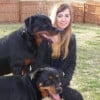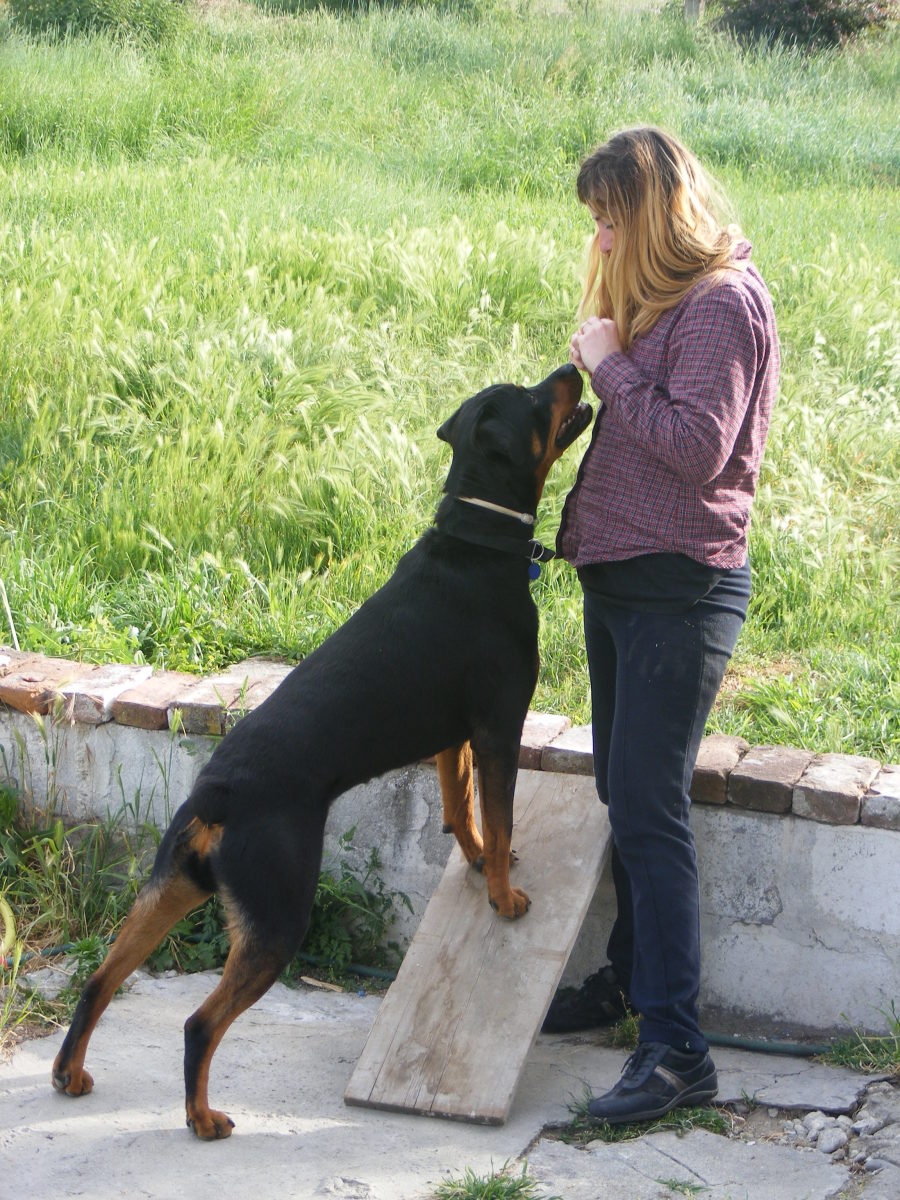How to Find a Reputable Dog Trainer
Did I hear the word "training?"
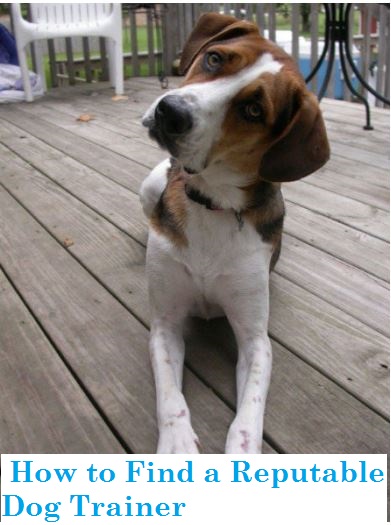
I have trained my dogs to sit and lie down and want to make $100 bucks an hour!
Be Wary of Unqualified People Trying to Make Money
Everybody seems to want to train dogs nowadays. With the airing of several television shows portraying charming trainers, it is quite tempting to want to try to make some money this way. Truth is, the path to becoming a dog trainer is not that smooth. Yes, it is true, anybody can virtually call themselves a trainer nowadays, but there are trainers and trainers and trainers!
The problem is that there are some unethical people around that print out business cards, publish a website, write a few fake reviews and call themselves trainers. These people may be really passionate about dogs, they may have perhaps trained their own dogs, worked as a dog walker for some time or watched many television shows. But it takes more than that to be a real trainer! We will be looking at the path to becoming a dog trainer, some red flags to be watchful for and some signs of good trainers. This should help recognize the good apples from the bad. Don't just trust anyone to train your dog; rather, do some research and ask important questions!

What are Signs of a Reputable Trainer?
As mentioned, there are trainers, and trainers and trainers. How do you spot a good trainer? There are several things to keep into consideration. Ideally, upon spotting a trainer you should ask several questions over the phone or in person. Following are signs of reputable trainers and questions you may want to ask to ensure you and your dog will be in good hands.
- History of Training
Not impressed by the number of years the trainer has been training for? Well, at least the trainer is being honest! Of course, everybody has to start somewhere! But even somebody new in the field must have some hands-on training under the guidance of another trainer. A good trainer knows that learning how to train a dog is not something that happens overnight. One or two years working as an assistant trainer may be a humble start, but at least the trainer has put some effort to learn under the belt of a professional.
However, don't be too enthusiastic about the trainer that says he has trained dogs for over 25 years and he looks like a teenager! Some people inflate their years of knowledge in hopes to impress. Yes, if Mary says she has trained for 30 years and she is in her sixties, that makes sense. Unfortunately, it has become a trend to count the years a person has devoted to training his/her own dogs.That does not count, anybody can train their own dog to sit and lie down! Make sure you ask specifically, how many years have you trained dogs professionally. This may considerably cut down the years...
- Certification and Schools Attended
This is where it gets ugly: there is ultimately no licensing or certification requirement to become a dog trainer! This is obviously a problem because just about anybody can print out business cards and call themselves a trainer! While a lack of certification does not automatically translate into a bad trainer, a certificate along with hands-on experience can really set a good trainer apart. Indeed, certification often demonstrates the will to take the profession seriously, delve deeply into learning theory and the will to continue learning and growing professionally.
There are several schools nowadays to become a dog trainer. Unfortunately, not all are that good. Some online schools allow you to obtain certification online by studying their books and then taking their test. While some of the materials studied are acceptable, a good dog trainer also needs hands-on experience. If a trainer claims to have obtained certification from an online vocational school, make sure that online vocational program was actually combined with some hands-on mentoring somewhere. To make it short and sweet: you cannot become a good trainer by simply reading a few books!
According to the Association of Pet Dog Trainers, a certified dog trainer may range widely from a person that has studied for 2 weeks and taken a test, to somebody that has studied extensively for years before being tested on his knowledge and skills.
- Training Methods
There are many different types of trainers across the globe. Find one that is force-free and uses positive reinforcement. Stay away from dog trainers that use prong, chokes and electronic collars or harsh training methods. Also, be watchful for trainers who adhere to old dominance theories and that the use words dominance, alpha and pack leader. Be also wary of some dog trainers who sneak the word positive on their websites when they really are not positive trainers. We will see a list of some methods in the next section.
- Attending a Class
A good trainer has no problem whatsoever in allowing a prospective client to attend a class. If the trainer appears uncomfortable, consider that he may have something to hide. Actually, some trainers even encourage you to take a peak at classes so you can have a feel of what they are like. If you decide to go this route, make sure you pay close attention and ask yourself the following:
Do the dogs look happy and eager to learn? Note; during the very first class, dogs may be a bit louder and excited; this improves as the dogs get used to being around each other. The people attending should also be enjoying themselves. Training should be fun for both dog and owners.
If there is a dog that is barking or reactive, is the trainer taking any steps to reduce such behaviors? The trainer should be increasing distance between dogs, putting up a barrier, giving a dog an interactive toy or giving the owner instructions on how to calm him down. Note: unless you are attending a "growly class" for reactive dogs the barking should be at a tolerable level.
Is the trainer explaining every exercise well? A good trainer employs different teaching methods so to ensure she meets the needs of different styles of learners. Some people have difficulty learning by just listening and do best if they get to observe the exercise and then practice it themselves. These are called "kinesthetic learners".Some trainers have demo dogs with them so they can show how to do the exercise. A good demo dog should not be a trainer's dog but a dog that has never performed the exercise before.
Is the trainer to dog ratio too high? A good trainer knows how important it is to keep classes in a small number so that she/he can scan the behaviors of dogs and avoid problems. Too many dogs grouped together under the guidance of a trainer may be an accident ready to happen, even if they are on leash. A good trainer to dog ratio also ensures the trainer can give the one-on-one attention dogs and dog owners deserve. Looking for a reference number? Generally, one dog trainer should have no more than 6 dogs, kept at a safe distance. If there are more dogs than that, there should be an assistant trainer.
Is the trainer providing assistance as needed? If you notice a dog owner is struggling with an exercise, is the trainer intervening or is she ignoring the owner and continuing to talk? A good trainer knows that importance of being clear and ensuring the client understands the exercise well. If the dog owner fails to understand, he or she will be practicing at home in the wrong way and this will slow down the training process.
Are children permitted in class? Are they safely kept under control? Policies about children attending classes vary from one trainer and another. Some do not allow small children in group classes , others do only if there is a parent/assistant to supervise such child. Some training facilities have an area designated for children where they can read, draw and play. Some trainers invite children to attend classes as long as they are well-under control and behaving. Children should not be running, screaming and creating havoc. They should not be playing with the agility equipment, client dogs or other items found around.
What training tools/methods are being used? A force-free trainer specializing in positive, reward-based training methods should have dogs wearing flat buckle collars, harnesses and sometimes head halters. Again, avoid trainers that allow choke collars, prong collars and shock collars in classes. Also, for the safety of dogs and owners, flexi-leads should not be allowed. The trainer should allow treats, toys and lot of praise. You want to avoid trainers that resort to abusive methods such as kicking, hanging, helicoptering, leash pops and leash jerks quite popular among old-school yank and crank trainers.
Does the trainer require proof of vaccination? A good trainer is concerned about the health and well-being of the dogs that attend classes. For this reason, a trainer should verify that all dogs participating in classes are clear of communicable diseases and have proof of vaccinations. Rabies, the distemper combination and bordetella are some common vaccinations required. Vaccine requirements may vary from location to location depending on what diseases are endemic per the local vet's advice.
How about continuing education? Ask the trainer if he or she belongs to any educational organizations that encourage continuing education. Some of these organizations include APDT, CCPDT, NADOI and IAABC. Reputable dog trainers know how important it is to continue their education and they therefore attend seminars, conferences, purchase books and network with other trainers. Note; just because a trainer is a member of APDT does not make him a trainer. APDT is not a training school that certifies trainers it is simply an association anybody can be part of if they pay a fee.
How About references? A good trainer will have no problem in having potential clients check references. Past clients, training colleagues, veterinarians are all great references that are willing to leave a testimony about the trainer's skills. Testimonials and references are usually provided by the trainer upon request.
Dog Trainer Ethics: offering guarantees when dealing with behavior problems and failure to refer clients to other professionals if something requires a higher level of expertise is an ethical issue.
A good trainer knows that there are no guarantees when it comes to changing a dog's behavior. Some behaviors may be genetically based and while they can be managed at times, it is also true that some behaviors can never be completely eradicated. So if a dog trainer is advertising or making statements such as " we will fix your dog's behavior problem guaranteed or we will train your dog in three days" be wary! Behavior takes a while to modify and no guarantees can ultimately be made. Guarantees and promises are a red flag that requires caution. To learn more about this read: Can Behavior Problems be Cured Once and for All?
A serious dog trainer should also not be stepping on boundaries designated for other professionals. For instance, a dog trainer should not be making recommendations on how to treat an ear infection and cannot prescribe drugs to use to calm an anxious dogs. This advice must be left to other professionals such as veterinarians and veterinary behaviorists.
*Note: According to APDT, dog trainers tend to erroneously use the title "behaviorist", a title to which they are really not "entitled" to use. A behaviorist is a professional who has a doctorate level graduate degree. For instance, a Certified Applied Animal Behaviorist (CAAB) is a behaviorist certified through the The Animal Behavior Society. Trainers who are not qualified should therefore not be using the term "behaviorist"- If the trainer is well-versed in dog behavior, the designations " behavior consultant" behavior counselor" or "behavior specialist" are more appropriate. To learn why a dog behaviorist is your best option when dealing with serious behavioral problems read: Why a Dog Behaviorist is Your Best Option when Dealing with Fighting Dogs
Last but not least, take a look at the trainer's dogs. A good trainer should have put some titles on their dogs. Does the trainer have a service dog? Has the dog won titles in the sport the trainer is teaching? If the trainer is teaching basic manners, at a minimum you would expect a CGC (canine good citizen) title. Many dog trainers hang their dog's ribbons and titles earned in the room they teach classes. If the trainer trains outdoors, ask what titles she has put on her dogs. For a list of American Kennel Club Titles visit AKC Titles.
What training method will you choose? See what dogs think!
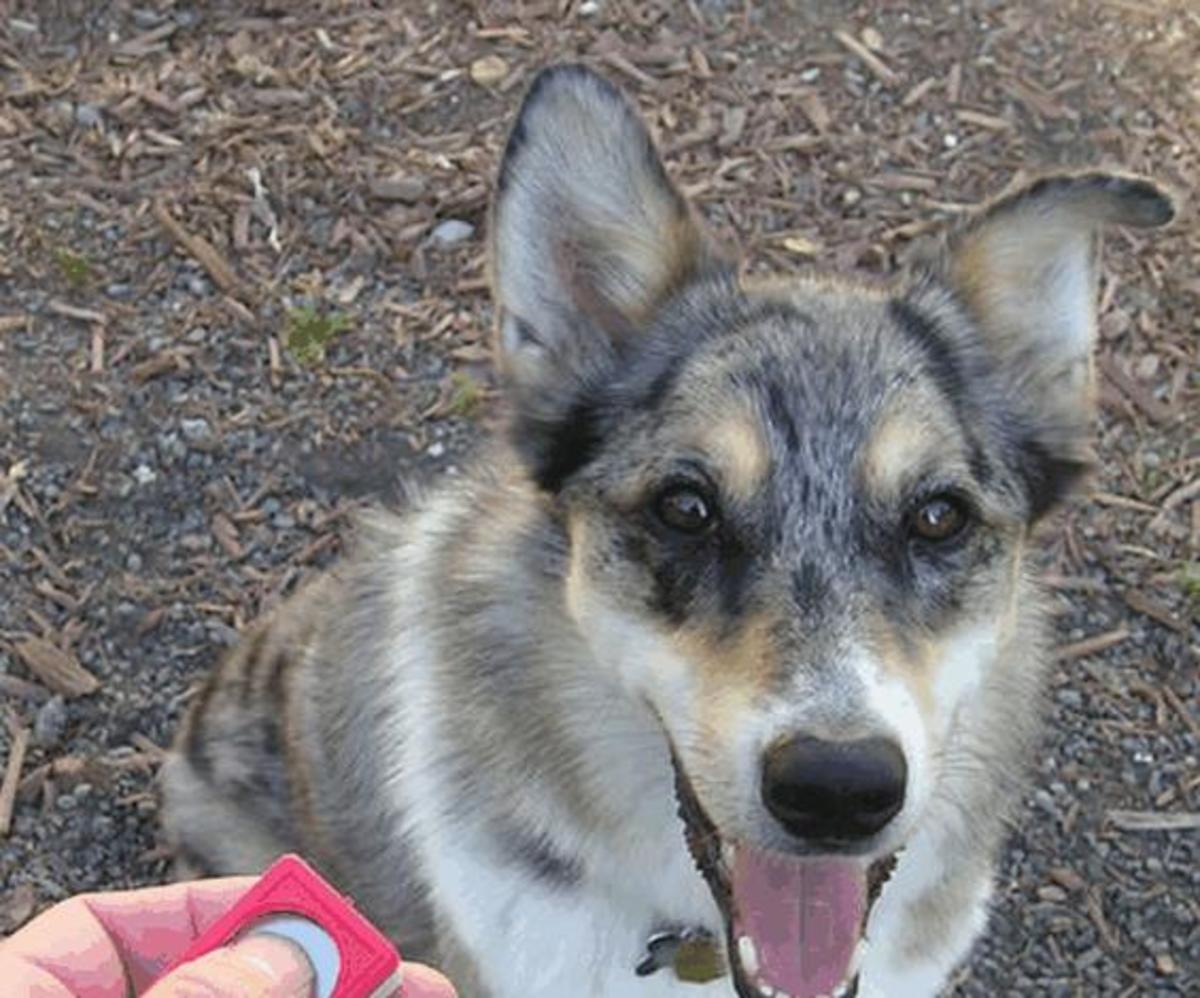
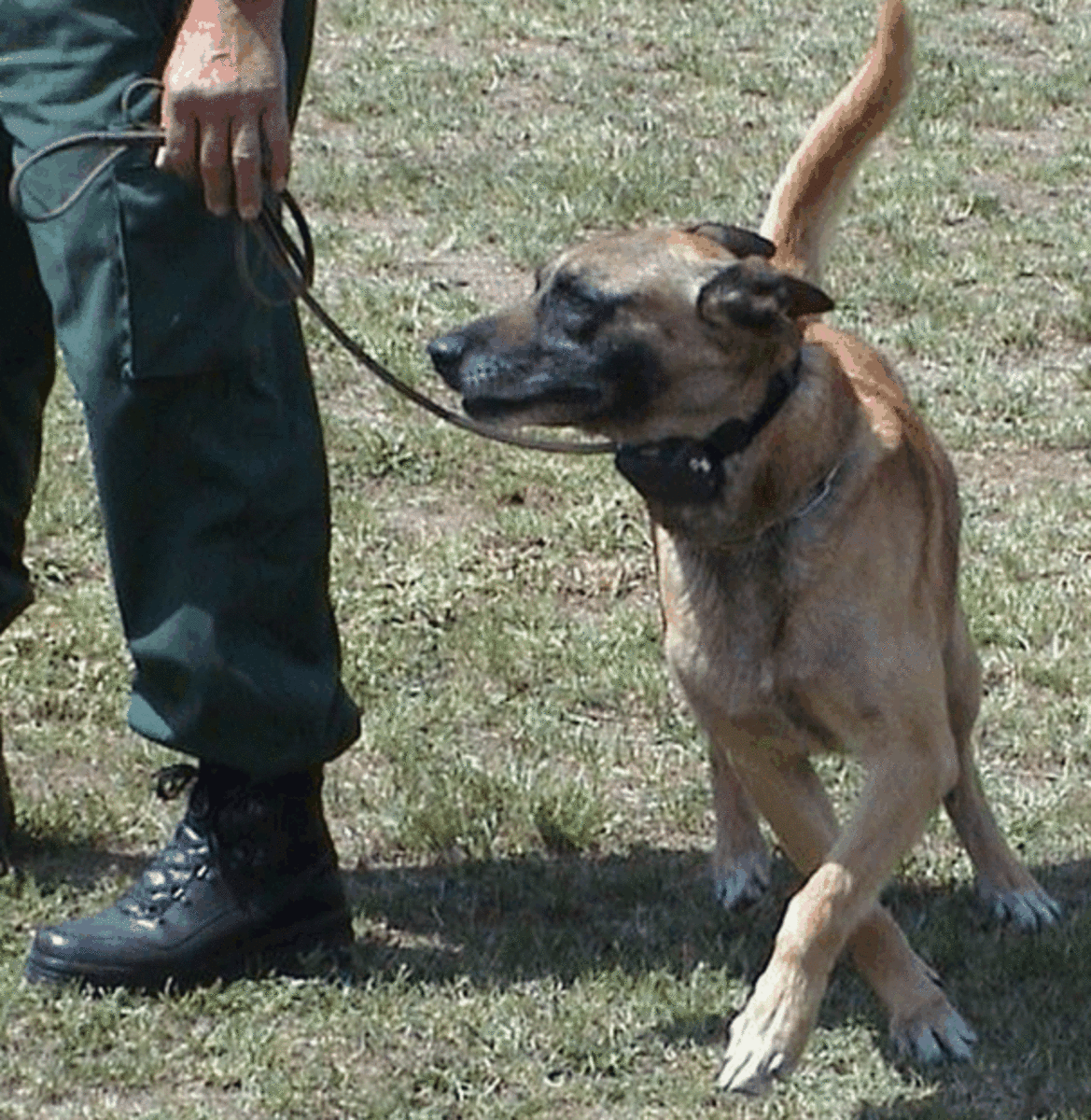
Types of Trainers
There are ultimately so many types of trainers in the field of dog training, your head may be spinning! This is because a dog can be taught new behaviors in several ways. For instance, you can train your dog to sit by luring him with a cookie, prompting him into a sit by pushing his rump down, capturing the sit when your dog performs it naturally or even shocking the poor dog until he sits. This guide will help sort out the good from the bad and clarify some obscure terms that may pop out here and there on websites, groups and forums. To learn more about the quadrants of positive reinforcement, positive punishment, negative punishment and negative reinforcement read: Dog Behavior Modification Terms
Balanced Trainers: these trainers are a way in between the compulsion trainers and positive reinforcement trainers. They basically use a “balance” of correction and reward. Wanted behaviors are rewarded, and unwanted behaviors are corrected. These trainers tend to use a variety of tools in their repertoire and use them accordingly. They may, therefore, use treats and then use prong collars.
Clicker trainers: clicker trainers are force-free trainers who use positive reinforcement as their quadrant of choice. They use clickers to mark wanted behaviors the dogs offer voluntarily and reward. Because wanted behaviors are clicked and rewarded, dogs tend to repeat such behaviors. And because unwanted behaviors are ignored, they will extinguish over time. This training method produces happy dogs that are eager to train and offer new behaviors (see picture).
Compulsion trainers: the philosophy is that the dog must be shown who is the boss. Alpha leader, dominance and pack leader are some common words you will hear from these trainer's mouths. Expect these trainers to put a big emphasis on the need to have dogs perform fast with no questions asked. These trainers tend to use positive punishment/negative reinforcement as the main quadrant of choice. "If the dog does not respond to a command quickly enough, a correction must follow or the dog will learn to ignore commands", is their philosophy. Pro-compulsion trainers believe that dogs need some level of discomfort, pain or fear in order to respond. Choke collars, prong collars and shock collars are often used. Dogs obey because they do not want to face the painful consequences.
Cross over trainers: these are dogs who used to train based on compulsion but who have pledged to "cross over" and become more positive, force free trainers.
Force-free trainers: as the name implies, force-free trainers object to the use of force. They train using positive reinforcement and are basically positive trainers that use this term to make it clear they train force-free.
Positive trainers: these trainers use positive reinforcement as their main quadrant. However, the words positive needs to be interpreted with a grain of salt In scientific behavior terms, the word positive simply means "to add" and this word can be used for both positive reinforcement and positive punishment. “Positive reinforcement”, for instance, means to add something reinforcing that increases the chances that a behavior will be repeated. “Positive punishment”, on the other hand, means to add something perceived as punishment which decreases the chances a behavior will be repeated.Some dog trainers, therefore, may purposely use the word positive to attract clients when they do not really use positive reinforcement!
Which methods or trainers are right or use the best methods? Hackles are often raised when trainers compare each other and often there is lots of conflict. Common sense dictates that dogs should learn using the least amount of force as possible. After all, did you enjoy learning with a teacher that praised you every time you got an A or did you prefer that mean math teacher that yelled, pulled your hair and every body hated? Just as teachers are not the same as decades ago (a teacher would get in trouble nowadays for hitting a child on the hand with a wooden ruler) dog training is in the process of evolving as well. And because training dogs is mostly about forming a bond, kind training methods are ideal. More and more trainers, indeed are embracing force-free training methods nowadays and with great results. Dogs trained using force-free, gentle methods are happier, healthier and eager to please!
What are those letters next to the trainer's name?
You may be wondering at times what all those letters next to a dog trainer's name mean. These are acronyms, that is groups of letters that stand for words. These acronyms mostly depict the certifying school. Following are some examples.
ABCDT: This trainer is certified by the Animal Behavior College
CPDT-KA: stands for Certified Professional Dog Trainer Knowledge Assessed. This trainer is certified by the Certification Council of Professional Dog Trainers.
CPDT-KSA: stands for Certified Pet Dog Trainer Knowledge and Skills assessed. This trainer is certified through the Certification Council for Professional Dog Trainers.
CAAB: stands for Certified Applied Animal Behaviorist. This behaviorist is certified by the Animal Behavior Society.
CDBC: stands for the Certified Dog Behavior Consultant. Certified through the International Association of Animal Behavior Consultants
CDT: Certified Dog Trainer through the International Association of Canine Professionals
DACVB: stands for Diplomate of the American College of Veterinary Behaviorists
Cert CBST: stands for Canine Behavior Sciences and Technology Certificate. This behavior specialist is certified by the Companion Animal Sciences Institute.
CTC: stands for Certificate in Training and Counseling. This trainer is certified through the San Francisco SPCA Dog Training Academy,
KPA CTP: stands for Karen Pryor Academy Certified Training Partner. This dog trainer is certified through the Karen Pryor Academy
PMCT: stands for Pat Miller Certified Trainer. This trainer is certified through Pat Miller’s Peaceable Paws.
VSPDT: stands for Victoria Stilwell Positively Dog Trainer. This trainer is certified through Victoria Stillwell's Dog Trainer Program.
Alexadry,© Adrienne Farricelli CPDT-KA All rights reserved, do not copy!
Do you prefer force-free training?
For further reading
- Dog Behavior: Understanding Fear Periods in Dogs
What are fear periods in dogs and when do they take place? Learn how to cope with them and help your dog overcome them. - Dog Behavior: Can you Reinforce Fear?
We are always told not to pet, cuddle or comfort a fearful dog because this may reinforce fear. But can fear really be reinforced? Learn what the experts say about this. - Dog Behavior: A Guide to Behavior Modification Techn...
Say NO to coercion and say YES to rewards. Learn effective modern based dog behavior modification techniques. As the words imply, behavior modification entails modifying a dog's behavior for the purposes of increasing or decreasing wanted and... - Dog Training: How to Shift From Compulsion to Reward...
Looking for kinder and scientifically approved training methods? Reap the benefits of training reward-based training methods for a better bond with your dog!
